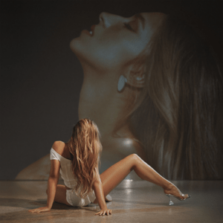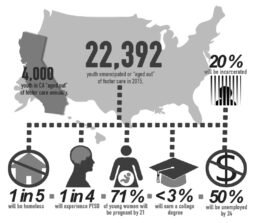
Credit to Winona Reif
With its central role in human expression, the history of art has always been colorfully drawn across the canvas, yet it commonly finds itself in contention with other academic subjects like the sciences. With initiatives like California’s Proposition 28 promising to allocate $1 billion annually for arts education, the discussion on the importance of art is gaining new attention.
“Art has always somewhat been commentary, even if it’s not conscious,” said senior Calvin Chao. “[Art] can also subconsciously talk about the state of a society. Art movements were heavily influenced by the
time around them. It tells us where we [are] as people.”
The accessibility of art has risen, particularly through digital platforms like Pinterest, known for its popular aesthetic boards, which have reached 7.4% of the global population and allowed people to be connected to different aesthetics.
“People will take on micro-labels and turn it into a lifestyle,” said sophomore Mavis Nguyen. “People will follow a Pinterest board as [if] it’s [their] life’s purpose.”
Many feel that art’s value is no longer being defined by high society, but instead becoming democratized.
“Art used to be high society,” Chao said. “Now, it’s … internet fan fiction and web novels. Anybody can publish anything … More and more art is in the hands of people, which is good. But they start to overlook any significance.”
This can also represent a growing shift in what is considered ‘good art.’
“When I think of museums and aesthetics, it screams academia,” Nguyen said. “Back in the day, artists needed credentials and history. Now, that’s not always the case.”
Even as digital and accessible forms of art gain traction, physical forms of expression remain deeply valued.
“There’s something so enchanting about going to a museum and seeing [a painting’s] layers in real life,” Nguyen said. “It has this gorgeous frame, and it has … so many colors. It’s not the same when you see it online.”
With the growing competitive nature of high school, many see a growing disinterest in arts-related classes.
“Sadly, with the way these are going right now, there’s a little bit less of a focus on arts in the competitive, academic environment, [where] people are more worried about … grades and academic classes,” Chao said. “It’s like ‘It’s just an elective, I don’t care about learning it at all.’”
Additionally, increase in consumerism makes it so that people find less value in making their own art.
“Buying things off Amazon or other fast fashion … costs so little [and] takes less time,” said sophomore Megan Hugo. “You find joy in customizing it yourself … [and] feeling deprived of that joy knowing there’s somewhere else that can do it for cheaper or less time is … upsetting to see.”
In addition, many still embrace art as a way to foster personal growth and self-discovery.
“I’ve definitely changed as a person through art,” Nguyen said. “In the beginning, I didn’t know where I fit in. It helped me understand my identity, my values and my emotions.”
With the growing digitalization in the world, many have seen a decline in appreciation for art. However, the rich history and variety of art still play a big role in self-identity and expression to many.



